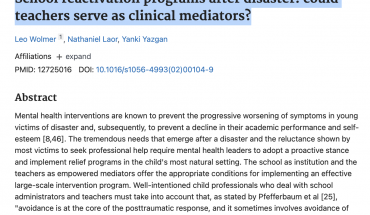Association Among SNAP-25 Gene DdeI and MnlI Polymorphisms and Hemodynamic Changes During Methylphenidate Use: A Functional Near-Infrared Spectroscopy Study
Özgür Öner, Ata Akın, Hasan Herken, Mehmet Emin Erdal, Koray Çiftçi, Mustafa Ertan Ay, Duygu Bicer, Bedriye Öncü, Ozlem Hekim Bozkurt, Kerim Münir, Yankı Yazgan
Objective: To investigate the interaction of treatment-related hemodynamic changes with genotype status for Synaptosomal associated protein 25 (SNAP-25) gene in participants with attention deficit hyperactivity disorder (ADHD) on and off single dose short-acting methylphenidate treatment with functional near-infrared spectroscopy (fNIRS). Method: A total of 15 right-handed adults and 16 right-handed children with DSM-IV diagnosis of ADHD were evaluated. Ten milligrams of short-acting methylphenidate was administered in a crossover design. Results: Participants with SNAP-25 DdeI T/T genotype had decreased right deoxyhemoglobin ([HHb]) with treatment. SNAP-25 MnlI genotype was also associated with right deoxyhemoglobin ([HbO2]) and [HHb] changes as well as left [HHb] change. When the combinations of these genotypes were taken into account, the participants with [DdeI C/C or T/C and MnlI G/G or T/G] genotype had increased right [HHb] with MPH use whereas the participants with [DdeI T/T and MnlI T/T] or [DdeI T/T and MnlI G/G or T/G] genotypes had decreased right prefrontal [HHb]. Conclusions: These results suggested that SNAP-25 polymorphism might be associated with methylphenidate induced brain hemodynamic changes in ADHD participants.

